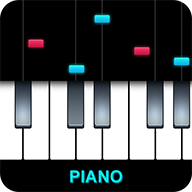说起虚拟现实技术,相信大家都已经在各类科幻电影中见识过了。作为显示技术的最新成果,虚拟现实技术将3D显示技术更进一步,开启了3D实景显示和实景交互的新篇章。作为显示业界的重要峰会,SIGGRAPH上宣布的技术都将成为未来一年的风向标。在SIGGRAPH2015开幕前夕,让我们一起回顾一下SIGGRAPH2014上都有哪些技术已经成为了现实。
头带显示器的冲锋号
在2014-2015年,仅在中国市场就有超过10家公司发布了头戴显示器和头戴虚拟现实设备。头戴式显示设备不仅是将显示器做的更加便携,更是对交互操作的一种全新探索。在这一年,索尼推出HMZ系列头戴显示器,并可以直接
头戴显示的典型应用就是私人电影院
用手机等移动设备有线连接观看相当于100多英寸的3D巨幕;谷歌推出了智能眼镜,可以与手机连接并采用语音和触摸进行交互,这两个有代表性的头戴解决方案实际上都存在各类问题,前者笨重后者体验差。
实际上在SIGGRAPH2014上,英伟达联合北卡罗莱纳大学的研究团队,共同发布了一套头戴式显示器的全新解决方案Pinlight。这个技术取消了投影环节,使设备更加小巧,成本也更低。该技术将图像信息整合至眼镜的镜面上,而不是投影到视网膜。研发团队的方案是将LCD面板与蚀刻塑料片相结合,镜片上呈点阵式分布的多个蚀刻塑料片能够将来自边缘的细小投影光束折射至佩戴者视野之中,从而直接在镜面上显示内容,而且还可以实现3D化。若该技术商用,可以解决头戴设备的笨重与虚拟现实显示效果的双重问题。
游戏是推进虚拟现实技术的强心剂
实际上现阶段不论是PC显示器、平板电脑还是手机,都是一块能显示动态画面的屏幕,就算色彩再逼真、响应速度再快、点距再小,物理结构的限制决定了其不可能为用户创造“身临其境”的效果,这方面只有头戴式显示器有望实现。Facebook愿重金收购沉浸式虚拟现实技术厂商Oculus VR,也是看准了这个趋势。
然而在SIGGRAPH2015上,我们将有望看到更多全新的头戴显示技术和产品。
现阶段虚拟现实的最佳方案
头戴显示器让消费者可以突破屏幕的束缚,随时随地来体验巨幕带来的良好体验,但科技的发展让我们可以在虚拟的世界中自得其乐。基于前文提到的头戴显示器技术,越来越多的虚拟现实公司都在摩拳擦掌推出系列的解决方案。在过去的一年中,蚁视科技、HTC、三星、暴风科技等公司推出了头戴虚拟现实头盔,通过将手机放入头盔后实现基于手机陀螺仪变化带来的虚拟现实显示效果。不仅如此,上游企业高通、杜比等厂商也在积极的在虚拟现实技术上进行部署。
9.9还包邮的头带显示器
虚拟现实头盔相比头戴显示器来说,虽显示效果上略逊一筹,但在成本上大大降低。如果仅想体验一把虚拟现实的感觉,我们只需要花费9元人民币就可以制作出一个简易的虚拟现实眼镜了。当然这个眼镜本身是不能显示任何东西的,我们需要将手机放到眼镜后面,在开启特定的程序进行虚显示。这个程序将3D画面配合偏光镜片显示在使用者的眼前,然后根据手机中陀螺仪的变化,实现对应使用者移动、抬头、转头、声音角度的判断,最终将变换的场景进行显示。
3D魔法书将广泛应用在教育产业
然而虚拟现实显示技术不仅应用在头戴设备上,目前虚拟现实图书和玩具已经上市。在SIGGPAPH2014 ASIA上,许多参展商展出了“3D魔法书”,只要一张纸便可以打印出来,然后用移动设备下载专用APP软件后扫描就会有虚拟3D的效果,这种技术是对传统纸质图书的一种延展,不仅仅摆脱了原有图片式教学的局限性,更能激发儿童的想象力,可以让使用者在原有的基础上进行一定的涂鸦,可以将书中的人物描绘成自己想象的样子。并且,这对于医学模拟、军事模拟等等具有非凡的意义。不仅如此,乐高公司将自己的玩具也与虚拟现实技术进行了结合。当消费者使用特的的APP软件扫描乐高图形后,就可以在在手机上显示出这个玩具是一整套玩具中的哪一个部分,甚至可以在手机上进行搭建后3D显示出来。
所以在今年的SIGGPAPH上,3D虚拟现实显示交互的游戏、产品将会呈井喷式的增长。
英特尔玩DX12英伟达何去何从
作为专业为的图形大会,SIGGRAPH2014上也展出了非常多的专业图形处理显卡。在大会上英特尔也宣布将正式在硬件上支持DriectX12,如今时过一年英特尔也确实兑现了承诺,将旗下主流核心显卡都进行了升级,不过仅可以支持到DriectX11.2,估计在SIGGPAPH2015上我们可以见到英特尔支持DriectX12的产品。
微软是DriectX显示接口的创造者,但其更新速度实在让人不忍直视,2009年推出DriectX11后,直至2014年才推出了DriectX12。在这段时间,AMD针对大型3D游戏开发了Mantle接口以应对停滞不前的DriectX,为此AMD的FirePro系列专业显卡得到了非常好的市场认可,甚至连索尼PS、微软Xbox游戏机,苹果MacPro工作站都转而使用AMD的图形显示卡。
作为坚持DriectX不动摇的英伟达,支持DriectX不仅是显卡的事儿,还有移动端的重型武器Tegra K1和Denver。时代在变,DriectX的意义不再仅限于跑分和特效,更多的是针对移动设备的优化。此外,由于DriectX12的应用范围已经扩展至移动端,平板电脑和智能手机都会被覆盖,因此高通也在第一时间表示其GPU核心将全面支持DriectX12,这让移动芯片节节败退的英伟达的图形专长暗淡无光。
云端图形计算技术或将成主流
更强的图形处理技术将带来更好的3D体验,英伟达虽领跑PC桌面显卡的性能趋势,但也确实在图形移动计算方面进行了部署。通过英伟达在SIGGPAPH上展示的GRID技术,可以实现GPU硬件的虚拟化,即实现云端图形加速处理。试想一下不论是3D制图渲染,还是3D游戏的高精度解码,我们无需在PC或是手机、平板上使用高性能的GPU图形处理器,一切都交给网络另一端的GRID主机来进行运算后将结果回传给终端设备,终端设备在未来仅承担显示的功用。基于此技术,在未来不论是头戴设备还是随身智能设备都可以获益。
回归到理性的思考,我们从来就不缺乏新技术,缺乏的是将技术转变成实体产品的实践者。如今从上游芯片到中游技术再到下游制造厂商,都在着眼虚拟现实显示的相关产品的研发和制造,想必在SIGGPAPH2015上,会有越来越多的新技术落地,生产出令人惊叹的产品。
附给外国有人看的英文版:
SIGGRAPH2015 Preview: VR Will Meets a Brilliant Future
Speaking of virtual reality technology, most of us may have seen in all kinds of sci-fi movies. Virtual reality technology is regarded as the latest achievements of display technology, which will drive the 3D display technology into a new stage and open up a brand new chapter of the 3D real scene demonstration and real time scene interaction. As one of the most important summit of the industry, SIGGRAPH will always bring the benchmark technologies of the next. In SIGGRAPH2015 eve, let’s have a brief recall of SIGGRAPH2014 to find out what technologies has come into life.
Headset Display Pioneer
In the year of 2014-2015, there are more than 10 companies issued its headset display and headset virtual reality devices only in the Chinese market. The headset display devices not only make the display more portable but also become a brand new exploration of the interaction. In 2014, Sony have launched its headset display named HMZ series, which can let users to enjoy the 3D IMAX experience via a mobile device like mobile phone directly. While Google also have released Google Glass which achieved voice and touch interaction actions by using mobile phone connection. These two representative wearable solutions may have various problems: the former one is bulky and the latter one has poor experience.
In fact, in the SIGGRAPH 2014 summit, NVIDIA join-hands with the research team of University of North Carolina to announce a brand new solution of headset display——Pinlight. This technology eliminated the projection segment, making the equipment more compact with lower cost. This technology integrated the image information into the glass of the glasses instead of projecting onto the retina. The R&D team combined the LCD panel with an etched plastic sheet, so that the several dot matrix distributed etched plastic sheet will reflect the tiny projecting beam to the wearer’s vision and the contents can be demonstrated on the glass to achieve 3D effects. When the technology being available commercially, the problems of bulky and poor experience of the headset virtual reality equipment will be solved.
Actually, at the current stage, the PC monitor, tablet and mobile phone all equipped with a screen that can display dynamic images. Despite the colors are being more vivid, the response speed is being faster and the dot pitch is being smaller, the limitation of physical structure determines the existed display can not provide users a “virtual reality” experience. That is to say, only headset display devices have the possibilities to achieve virtual reality. Facebook have acquired the immersive virtual reality technology vendors Oculus VR heavily, also spotted this trend.
However, in the SIGGRAPH2015, we would expect to see more new headset display technologies and products.
The Best Solutions of Virtual Reality at this Stage
The headset display will make consumers to break the limitation of the displays, bringing better experience of IMAX at any time. With the development of technologies, we could enjoy ourselves in the virtual world. Based on the headset display technologies mentioned before, more and more virtual reality companies introduced various solutions. In the last year, ANTVR, HTC, Samsung, Baofeng Technology and other companies have launched their wearable virtual reality helmet, to achieve virtual reality display effects by placing mobile phone into the helmet and utilizing the phone-based gyroscope changes. Moreover, the upstream companies like Qualcomm, Dolby and other manufacturers are also taking actions actively in the virtual reality technology area.
Compared with the headset display, the virtual reality helmet has poorer display effects but the cost is greatly reduced. If you just want to experience the feelings of virtual reality, you can only spend 9RMB to make a simple virtual reality spectacle. Of course, this spectacle itself cannot show anything, we need to put our mobile phone behind and start-up a specific program for virtual view. This program combines 3D images or videos with the polarized lenses to show the images in front of the user, and then accompany with the change of the phone gyroscope to determine the user’s movement,rising head, turning around and angle of sounds, which will ultimately transform the scene for display.
However the virtual reality display technology not only applied on a headset, virtual reality books and toys have already being in the market. On the SIGGRAPH2014 ASIA, many exhibitors showcasing the “3D Magic Book”, you can print out it with a paper and then download a special APP on mobile devices to scan the paper, and the 3D effect will show out. This technology is an extension of traditional paper books, which not only get rid of the limitation of the original picture style teaching, but also can stimulate children’s imagination, allowing users to perform certain graffiti based on the original pictures and depict the characters into their own imagination. What’s more, this technology has extraordinary significance for medical simulation, military simulation and so on. Moreover, the Lego Company also combined their toys with virtual reality technology. When consumers use the specific app to scan the Lego graphics, they can find out the entire toy and even can see the 3D effects.
As a result, on this year’s SIGGRAPH, the interactive games and products showed in 3D virtual reality effects will meets huge growth.
Intel Support DX12 Where should NVIDIA Go
As a professional graphic summit, SIGGRAPH2014 also exhibited a lot of specialized graphics processing cards. During the summit, Intel also announced that will officially support DriectX12. One year later, Intel has indeed honored its commitment by upgrading the mainstream core graphics, but the problem is the graphics only support up to DriectX12. However, we could expect to see the products supporting DriectX12 of Intel on SIGGRAPH2015.
Microsoft is the creator of DriectX display interface, but the updated speed is unbearable. After launched DriectX11 in 2009, 5 years later, we could see the DriectX12 in 2015. During this period, AMD has developed Mantle interfaces for large-scale 3D games because of the stagnant of DriectX. As a result, the FirePro series of AMD received very good market acceptance, and even Sony PS, Microsoft’s Xbox game console and Apple MacPro workstations turned to be AMD’s graphic card consumers.
But NVIDIA is still adhering to DriectX, as for NVIDIA, supporting DirectX is not only something about graphics but also the heavy weapons Tegra K1 and Denver on mobile devices. Time changes, but the meaning of DirectX is no longer limited to benchmarks and special effects, we could see more on the optimized for mobile devices. Besides, since the application range of DriectX12 has been extended to mobile terminals, tablets and mobile phones will be covered. As a result, Qualcomm also said that their GPU core would fully support DriectX12, which makes mobile chips retreat of NVIDIA’s graphics expertise bleaks.
Cloud Computing Technology or Will Become Mainstream
Stronger graphics processing technology will bring better 3D experience. Although NVIDIA is now leading the performance of PC desktop graphics, it indeed to make some effort in deployment of graphic mobile computing. The GRID technology showing on SIGGRAPH by NVIDIA could achieve GPU hardware virtualization; in other words, NVIDIA could achieve cloud graphics acceleration process. Imagine that no matter 3D graphics rendering or high-precision decoding of 3D games, we don’t have to use high-performance GPU graphics processor on a PC, mobile phone or tablet, everything can be solved by using GRID host on the other side the network to conduct the computing process then transfer back to the terminal equipment, and in the future the terminal devices will only assume the function of display. Both headset devices and wearable smart devices will benefit from this technology.
Let’s return to rational thinking, we never lacks of new technology, what we need are the practitioners to transform the technology into a solid product. Nowadays, from the upstream chip to the midstream technology then to the downstream manufacturer, they are all focusing on the R&D of virtual reality display related products. We can expect that on SIGGRAPH2015, there will be more new technologies emerge as well as fantastic products.




















































网友评论